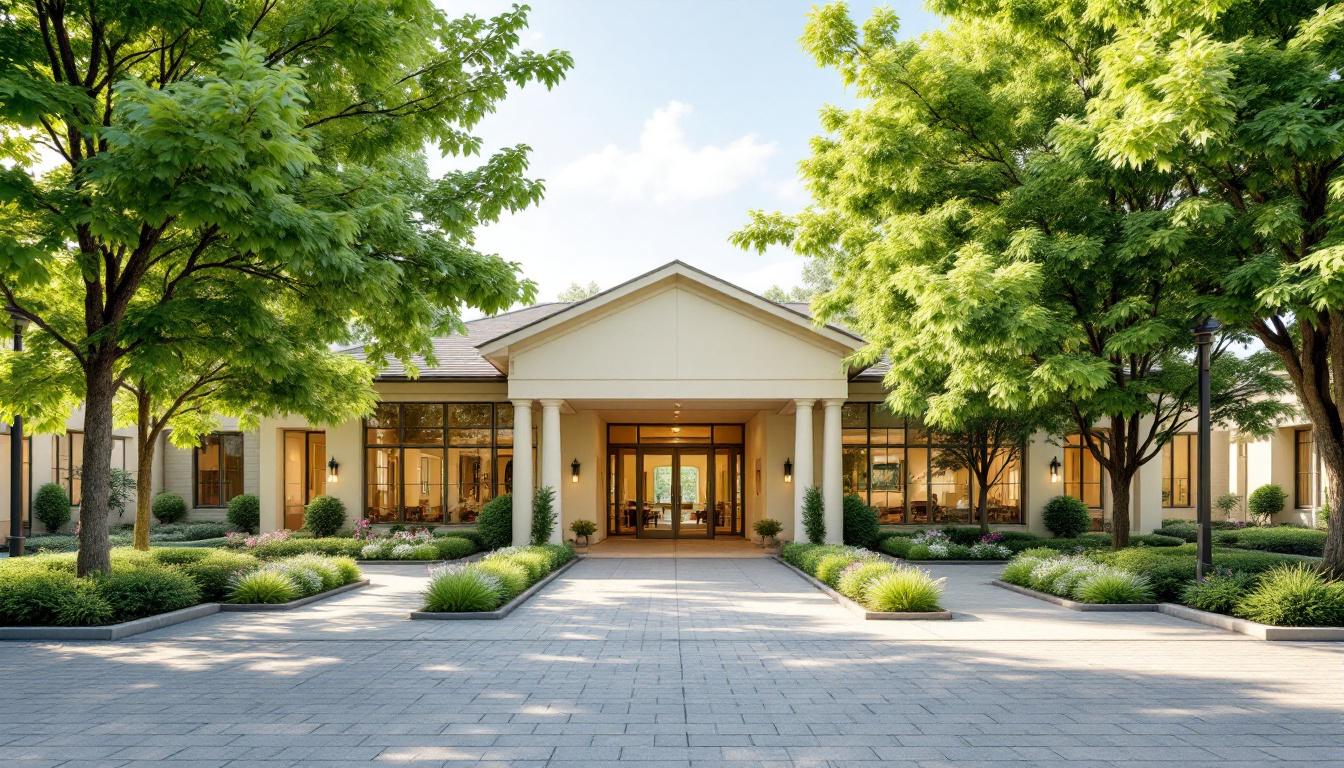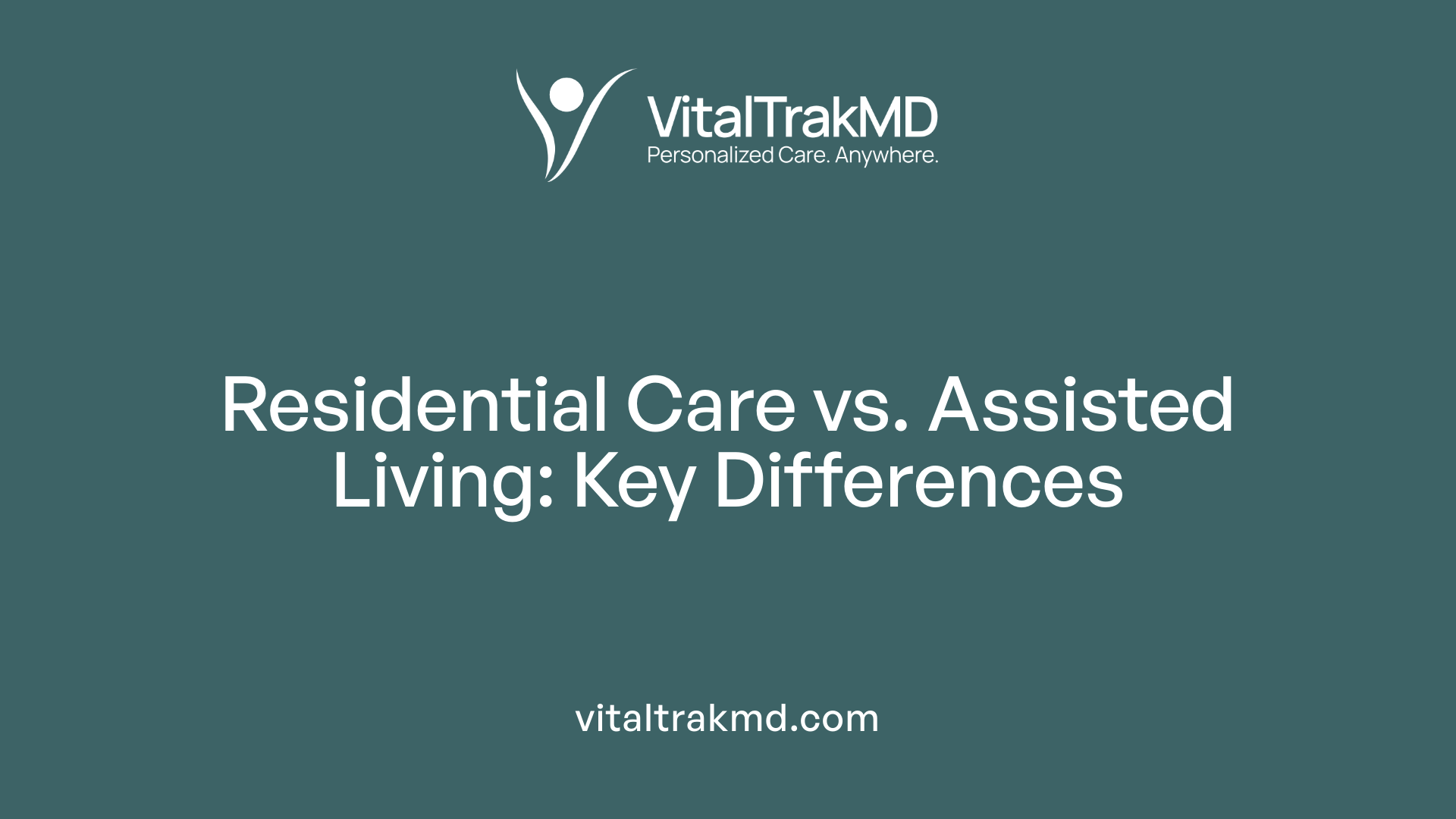In-Home Care vs Assisted Living Wellness Options

Understanding Elderly Care Options: A Comprehensive Overview
Deciding between in-home care and assisted living involves evaluating personal preferences, health needs, safety, costs, and social engagement opportunities. Each option offers unique benefits and considerations, making it essential to understand their characteristics to choose the most suitable environment for aging adults.
Differentiating Service Delivery and Living Environments
How do in-home care and assisted living differ in terms of services and living arrangements?
In-home care and assisted living are two prominent options for elder support, but they differ significantly in how services are delivered and the living environments involved.
Assisted living communities provide seniors with a designated living space—either private or semi-private apartments—within a community setting. Residents enjoy access to various amenities such as dining halls, recreational areas, and organized social activities. Staff members are available around the clock to assist with daily activities like medication management, bathing, dressing, and meal preparation. These facilities foster a social environment, encouraging interaction and community engagement, which can help combat loneliness.
On the other hand, in-home care allows seniors to remain in the comfort of their own homes. Support services are highly personalized and scheduled based on the individual’s needs. Caregivers may assist with activities such as hygiene, household chores, light housekeeping, transportation, and companionship. Cost-wise, this option often proves more economical for those requiring fewer hours of assistance.
While assisted living provides a structured community with social and health services in a shared setting, home care emphasizes maintaining independence by tailoring support within a familiar space. The decision between these two relies on individual health conditions, social preferences, and the level of support needed.
| Aspect | Assisted Living | In-Home Care | Additional Details |
|---|---|---|---|
| Living Environment | Community-based, private or shared apartments | Senior’s own home | Choice depends on preference for social environment versus independence |
| Service Delivery | On-site staff providing 24/7 or scheduled assistance | Caregiver visits as scheduled or on call | Flexibility versus structure |
| Social Opportunities | Activities, outings, communal dining | Depends on caregiver and senior’s initiative | Assisted living often promotes social interaction |
| Cost | Typically $3,000 - $6,000/month | $15 - $40/hour | Costs vary by location and service level |
| Ideal Residents | Seniors needing help with daily tasks but wanting community | Those valuing independence who need less extensive help | Based on health needs and lifestyle preferences |
Understanding these differences helps families and seniors choose the best support system tailored to their needs, balancing safety, independence, and social engagement.
Residential Care Versus Assisted Living Communities

What are the main differences between residential care facilities and assisted living facilities?
Residential care facilities, often called board and care homes or adult family homes, are small, intimate environments usually housing fewer than 20 residents. These homes provide a homelike atmosphere with personalized attention and are ideal for seniors needing more assistance with daily activities. Because of their smaller size, they promote a close-knit community feel, and staff can offer more individualized care.
Assisted living facilities are larger, organized communities that accommodate many residents—sometimes hundreds—within a setting designed to foster social interaction and active lifestyles. They offer numerous amenities such as social activities, outings, and wellness programs. Staff ratios are higher, allowing for more comprehensive support, including medical oversight, housekeeping, and meal services.
| Aspect | Residential Care Facilities | Assisted Living Facilities | Details |
|---|---|---|---|
| Size | Smaller, personal environment | Larger, community-oriented | Residential care homes are more intimate with fewer residents. |
| Setting | Homelike, private residences | Community spaces with amenities | Residential homes resemble private homes; assisted living offers organized communal spaces. |
| Care Level | Focused on personal assistance | Broad support including medical oversight | Both support daily activities, but assisted living includes more extensive services. |
| Cost | Generally less expensive | Typically higher | Due to more services and amenities, assisted living tends to cost more. |
Choosing between the two depends on individual care needs, social preferences, and budget. Residential care offers closer supervision and a cozy environment, making it suitable for those requiring significant assistance or early-stage dementia care. Assisted living suits seniors who enjoy social activities and want to maintain independence with some support. Both options are valuable, but the decision should be based on the senior's health, social desires, and financial situation.
For more detailed comparisons, search: "Difference between residential care and assisted living."
Safety and Challenges of Home Care

What are the disadvantages and safety concerns of home care for seniors?
Home care offers personalized assistance in familiar surroundings, but it has its drawbacks related to safety and overall well-being.
One common concern is the potential for hazards within the home environment. Falls, which are a leading cause of injury among seniors, can occur if the home is not properly modified. Installing grab bars, improving lighting, removing tripping hazards, and ensuring floors are non-slip are crucial steps to mitigate these risks.
Another challenge involves the availability and quality of caregivers. Finding qualified, compatible, and reliable caregivers can be difficult, impacting the consistency and quality of care seniors receive. Turnover and mismatches in caregiver personalities may lead to emotional strain or gaps in support.
Social isolation is a significant issue for seniors receiving home care. While in-home services help with daily tasks, they may not provide enough social interaction, which is vital for mental health. Feelings of loneliness may increase without routine social engagement.
Medical needs can sometimes be complex to manage effectively at home, especially with chronic or severe health conditions. Continuous monitoring and quick access to emergency services are sometimes limited compared to assisted living facilities or nursing homes.
Safety concerns extend beyond physical hazards to include emergency preparedness. A senior living alone may struggle to respond swiftly in case of falls or medical emergencies.
To address these issues, thorough assessments, home modifications, reliable caregiver arrangements, and additional support services are essential. Having a clear safety plan, regular health monitoring, and access to emergency response systems can significantly improve safety and quality of life for seniors receiving home care.
In-Home Care Versus Assisted Living: Pros and Cons
What are the advantages and disadvantages of in-home care compared to assisted living?
In-home care offers many appealing benefits. It allows seniors to stay in their familiar environment, maintaining independence and comfort. Personalized support can be tailored to specific needs, such as assistance with bathing, dressing, or medication management, often delivered directly by caregivers or family members. Additionally, in-home care is generally more flexible and can be arranged quickly, sometimes at a lower overall cost than moving into an assisted living facility.
Staying at home reduces exposure to contagious illnesses, which is a vital consideration during health crises such as flu season or pandemics. It also provides opportunities for one-on-one bonding with caregivers, fostering stronger personal relationships.
However, there are notable drawbacks. Safety concerns arise if the home environment is not properly modified—risks include falls or accidents that might require emergency assistance. The availability of medical support can be limited compared to assisted living facilities, which have on-site health professionals available 24/7. The reliability and quality of care also depend heavily on the caregiver’s screening, training, and consistency.
Assisted living offers a well-structured community setting designed for safety and socialization. It features professional staff available around the clock, along with amenities like meal services, recreational activities, and transportation. This environment can be especially beneficial for seniors needing more comprehensive support or those who may be socially isolated at home.
The trade-offs include higher costs and a permanent move from their existing home, which may involve emotional and adjustment challenges. Residents must adapt to a new community environment, which can sometimes be difficult.
Ultimately, choosing between in-home care and assisted living depends on the individual's health requirements, personal preferences, financial situation, and social needs. Some families consider a combination, starting with in-home care and transitioning to assisted living when needs increase.
Assessing Levels of Assistance in Assisted Living

What are the typical levels of assisted living care, and how are they determined?
Assisted living facilities categorize their care levels based on residents' ability to perform daily activities and their medical needs. These levels range from minimal assistance to full medical supervision.
The first level includes residents who are mostly independent, able to handle daily tasks like dressing and basic hygiene, but may enjoy community activities and need some oversight.
Level Two provides moderate support, helping residents with activities such as bathing, dressing, medication management, and meal preparation. Staff assistance is more hands-on but not continuous.
Level Three is suited for residents with ongoing health concerns, requiring regular health monitoring, medication administration, and coordination with healthcare providers.
The highest designated level involves 24/7 nursing care, catering to residents with complex medical conditions, chronic illnesses, or dementia. This level offers intensive support, including mobility assistance and medical treatment.
Determining the appropriate care level involves comprehensive needs assessments conducted by healthcare professionals. These assessments evaluate physical health, mental status, mobility, and medical conditions.
By matching the resident’s needs with the correct level of care, assisted living communities ensure they provide appropriate support while promoting independence whenever possible.
This classification helps families and caregivers understand the scope of services required, enabling well-informed decisions tailored to the individual’s health and daily support needs.
More info search query: Levels of assisted living care
Cost Considerations and Financial Planning
How do costs generally compare between in-home care and assisted living?
When evaluating long-term care options for seniors, cost is a significant factor. Costs for in-home care are largely influenced by the amount of assistance needed, the level of medical services required, and the geographic location. On average, in-home care services are billed hourly, with rates typically ranging from $16 to $28 per hour. For seniors needing around 40 hours of support weekly, this can amount to approximately $2,560 to $4,480 per month. Full-time in-home care, especially at higher intensity levels, can cost around $6,481 monthly.
In contrast, assisted living facilities usually charge a flat monthly fee that covers housing, meals, assistance with daily activities, and access to amenities. The median cost for assisted living in the United States hovers around $4,995 to $5,551 per month. This all-inclusive approach often makes assisted living an economical choice when ongoing, comprehensive support is necessary.
For those with minimal assistance needs, in-home care may turn out to be less expensive and more flexible, with costs directly proportional to hours of service. As needs become more complex and around-the-clock care is required, the gap narrows. Sometimes, the combined costs of in-home care or home health services can surpass what assisted living offers.
Financial options and planning
Funding for senior care varies widely. Medicare covers limited home health services but typically does not pay for long-term custodial care like housekeeping or companionship. Medicaid and long-term care insurance are common options to assist with costs, especially for assisted living and more intensive care settings. Veterans' benefits and personal savings also play pivotal roles in funding options.
It’s essential for families to analyze their financial resources early and consider different funding avenues. Many organizations, such as Care.com, can provide resources and guidance to help families plan and compare costs effectively.
Overall, both in-home care and assisted living require careful financial planning. While in-home care might be cost-effective for limited, personalized support, assisted living provides a comprehensive package at a predictable monthly rate, which can be advantageous for long-term planning.
Choosing the Best Fit: Factors to Consider
 When deciding between in-home care and assisted living, several important factors should be evaluated to ensure the best fit for the senior’s needs and preferences.
When deciding between in-home care and assisted living, several important factors should be evaluated to ensure the best fit for the senior’s needs and preferences.
First, consider the senior’s current and future health requirements. If they need extensive medical support or assistance with activities like medication management and health monitoring, assisted living provides on-site professional care and safety measures. Conversely, if the senior only requires help with basic activities and prefers to remain in a familiar environment, in-home care can be suitable.
Safety is another critical aspect. In-home care allows seniors to stay in their own homes, but safety modifications—such as grab bars, ramps, and non-slip flooring—may be necessary. Assisted living facilities are designed with safety and accessibility in mind, reducing hazards with features like emergency response systems and staff supervision.
Cost considerations also influence the decision. While in-home care can be less expensive initially—averaging between $15,000 and $30,000 annually—it may become costly if extensive medical or personal support is needed. Assisted living costs fluctuate but usually range from about $3,000 to $6,000 per month, which includes housing, meals, and some care services. Families should evaluate their financial resources and what services are covered by insurance.
Social preferences and lifestyle are equally important. Assisted living offers abundant social opportunities, recreational activities, and community engagement that can reduce loneliness. If maintaining social interactions is a priority, assisted living could be advantageous.
Proximity to family and community amenities also matters. In-home care allows seniors to stay close to loved ones and familiar surroundings, while assisted living communities are often located near hospitals and medical clinics, providing quick access to healthcare.
Lastly, assess caregiver support capacity. For those with family members willing and able to provide care, in-home arrangements may suffice. However, for seniors with limited family support or safety concerns, a structured environment with professional staff might be necessary.
In summary, choosing between in-home care and assisted living requires weighing health and safety needs, budget, social desires, the senior’s independence, and proximity to loved ones. Monitoring signs like frequent falls or neglect of personal care can also help determine when a transition might be appropriate.
Making an Informed Choice for Peace of Mind
Selecting between in-home care and assisted living requires careful consideration of the senior’s health, safety, social needs, and financial situation. Both environments offer valuable benefits—while in-home care promotes independence and comfort in familiar surroundings, assisted living provides safety, social engagement, and comprehensive support. Families are encouraged to assess current and future care needs, observe any safety concerns, and consult with healthcare professionals and care advisors. Trial periods and involving the senior in decision-making can facilitate a smoother transition. Ultimately, the goal is to find a wellness environment that maintains dignity, promotes health, and aligns with the senior’s personal preferences for a fulfilling lifestyle.
References
- Assisted Living vs In-Home Care: Pros and Cons | Caring Places
- Choosing Between Assisted Living and In-Home Care
- Home Care vs. Assisted Living: What Is the Right Option for Me?
- In-Home Care vs. Senior Living Communities: Choosing the Best ...
- In-Home Care vs. Assisted Living Facilities
- Assisted Living vs Home Health Care - New message!
- Comparing In-Home Care vs Assisted Living
- Assisted Living vs. Home Care: What Choice is Best for You or Your ...
- Compare Assisted Living/Home Care - Senior Living Residences
Recent articles
Want to Feel Better and Live Healthier?
Join hundreds of patients taking control of their health with personalized care that fits their life – not the other way around.
Rated 4.8/5 by 32+ customers







